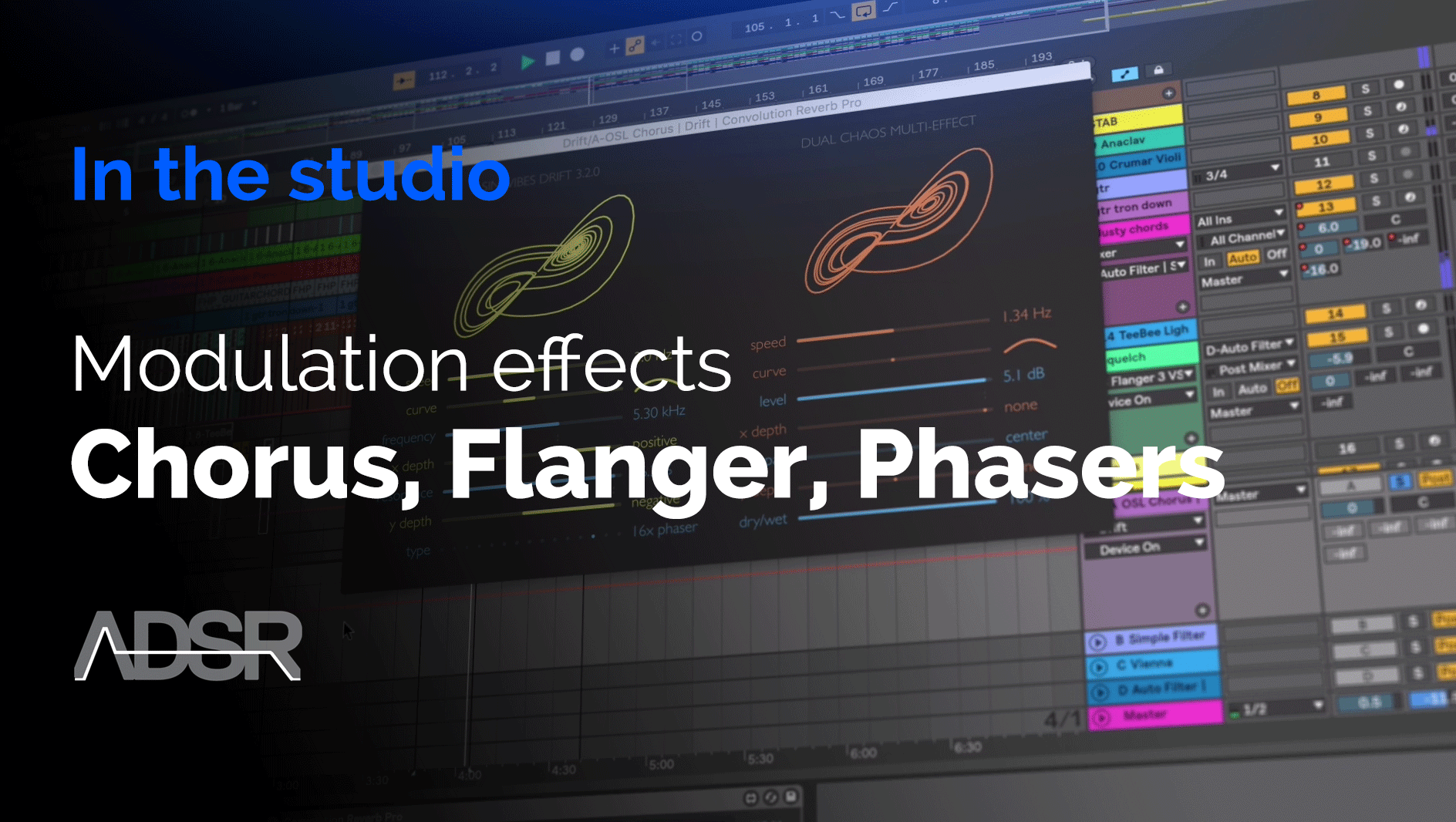
Modulation Effects – Chorus, Flanger, Phasers
Along with delay and reverb, modulation effects help add width and depth to a mix as well as animating static sounds. While you are probably familiar with these classic effects it’s easy to get confused by which is which and when to use them.
In this course we will go deep into the difference between them and how they are best applied to a mix. We will also look at their creative use in sound design and pushing them beyond their conventional use.
The Mandatory Guide To Classic Modulation Effects
COURSE OVERVIEW
The effects of chorus, flanger, and phasor can all be made to sound quite similar to each other, and can all add cyclic movement, warmth and motion to the tone of the sound and can adjust the stereo width, but they are each capable of producing very different results.
Taking some time to experiment with these different effects you will get to know the character of each, when to use them, and on what material to apply them to.
COURSE FEATURES
- Watch, Listen and Learn – our easy to follow video instruction gives you essential production knowledge
- 6 walkthrough videos show you exactly how, when and why to make use of key modulatione ffects
► Introduction & Chorus I
► Chorus II – Practical examples in the mix
► Flanger I
► Flanger II, practical examples
► Phaser I
► Phaser II, practical examples
- Total runtime 90 minutes
- Practical instruction by an experienced tutor
- Learn at your own pace, watch as many times as you need to learn the lessons
ABOUT YOUR TUTOR
Alan Gleeson is a musician with 20 years professional experience working in all areas of audio production.
His interest in electroacoustic music, live performance and the science of sound give him a unique and profound perspective on sound creation and music production, knowledge that he is passionate about both sharing as an educator and developing as an evolving sound artist.
Technical skill with an experimental approach to sound.

VIDEO SUMMARY
- Lesson 1 – Introduction & Chorus I
To begin with lets discuss one of the most popular modulation effects, Chorus. This effect simulates the effect of more than one performer or instrument playing the same part simultaneously. If we take the example of a choir or violin ensemble, each performer’s pitch will vary by a few cents sharp of flat and the timing will also vary. These variations make the result richer, more engaging, and bigger.
- Lesson Lesson 2 – Chorus II – Practical examples in the mix
In this video we continue and show some applications of chorus in a mix, and beyond.

VIDEO SUMMARY
- Lesson 3 – Flanger I
The next effect we are going to look at is a flanger. A lot of these modulation effects evolved from the use, abuse, and manipulation of two analog tape machines used in parallel. A flange is the rim of an analog tape reel and by touching it you alter the playback speed. So if you have 2 tape machines playing in time with each other and you touch the rim to slightly delay one and mix the signals together you will get a similar example to what we looked at in the first video when we introduced a track delay on a duplicate track, which produced comb filtering, which creates a series of peaks and dips in the frequency spectrum.
- Lesson 4 – Flanger II, practical examples
In this video we continue and show some applications of Flanging in a mix, and beyond.

VIDEO SUMMARY
- Lesson 5 – Phaser I
The next effect we are going to look at is a Phaser, it tends to be a bit smoother than flanging but is also capable of extreme effects if pushed. This also depends on the effect unit you are using as some are capable of more extreme results than others. Unlike the effects discussed so far a phaser does not use delay, to achieve its effect it uses a series of all-pass filters. Unlike regular filters that adjust the frequency content of a sound, all pass filters alter the phase in the frequency spectrum of a sound. When using a Phaser the peaks and dips that are created in the frequency spectrum and not harmonically related like with a Flanger so the setting of the frequency control on a phaser is important when you want to address a certain section of the frequency spectrum.
- Lesson 6 – Phaser II, practical examples
In this video we continue and show some applications of Phasing in a mix, and beyond.
Reviews of this product
Reviews require cookies, click here to change cookie settings.
